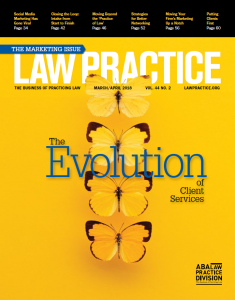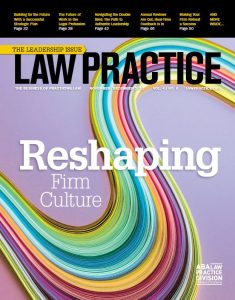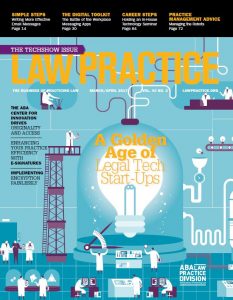ALI CLE — Ethics of Legal Advertising: Growing Your Bottom Line Without Crossing the Line – Online April 20th
 When ALI CLE asked me to present an ethics CLE on lawyer advertising, I hesitated. After all, I’ve been teaching this course across the country for more than 20 years. But the timing was right. There were hot-button issues sitting on my desk, and the equally red-hot debate over making the first substantial changes to the Rules of Professional Conduct related to law firm marketing since Bates v Arizona in 1977. So I said yes.
When ALI CLE asked me to present an ethics CLE on lawyer advertising, I hesitated. After all, I’ve been teaching this course across the country for more than 20 years. But the timing was right. There were hot-button issues sitting on my desk, and the equally red-hot debate over making the first substantial changes to the Rules of Professional Conduct related to law firm marketing since Bates v Arizona in 1977. So I said yes.
In the days leading up to my presentation (taped on March 23rd), there were articles in the local (Philadelphia) daily newspaper discussing geo-targeting billboards for Johnnie Cochran’s law firm (despite the fact that the famed OJ Simpson attorney passed away in 2005). There was U.S. District Judge Cynthia M. Rufe of the Eastern District of Pennsylvania dismissing the remaining (false advertising) claims in Larry Pitt’s lawsuit against competitor Lundy Law. I discussed earlier Pitt-Lundy battles in the 2013 version of my CLE. Yet they are both news items here in 2018. Social Media has been an integral part of my CLE since flashing up my MySpace profile in 2007. While I tout Facebook as being an integral part of marketing for many attorneys, the news was also covering just how our data was being used by the likes of Cambridge Analytica—that same market data we use to generate prospective clients was also being used for evil, and not good. The news was not fake, but apparently some of the Facebook users were. And, of course, there is the debate over proposed changes to the ABA model rules (for advertising and solicitation), scheduled to go before the House of Delegates this August during the ABA Annual Meeting in Chicago. So if that is just what is going on in my neck of the woods, and at the national level, you can imagine what else is out there.
If you are in need of an ethics credit for continuing legal education compliance and/or your law firm markets—this is a perfect use of one hour to catch up on the latest trends and discussions related to the always-prickly subject matter of appropriate (and inappropriate) lawyer advertising and solicitation.
 Marketing Attorney Blog
Marketing Attorney Blog


 In the March 2018 issue of the American Bar Association’s
In the March 2018 issue of the American Bar Association’s  Oh, remember the ‘80s? Alf, Madonna, Pee-Wee’s Playhouse, Garbage Pail Kids? I was in New Orleans to see Keith Smart’s last-second shot for Bobby Knight’s Indiana Hoosier over Syracuse in the NCAA Championship Game in 1987. I watched the Baltimore Orioles defeat the Philadelphia Phillies in the 1983 World Series (when the O’s still were more important to me than the Phillies). And I was at the Stanley Cup Finals between the Flyers and the Edmonton Oilers in 1985 and 1987. Those were just some of the games I attended in person. I worked in the Major Indoor Soccer League and the NHL during the 80s—attending hundreds of games. I remember the end of high school, my college years, first jobs, and the start of law school. Little did I (we) know at the time that those babies being born were—Millennials! And that—in the here and now—it would all be about them.
Oh, remember the ‘80s? Alf, Madonna, Pee-Wee’s Playhouse, Garbage Pail Kids? I was in New Orleans to see Keith Smart’s last-second shot for Bobby Knight’s Indiana Hoosier over Syracuse in the NCAA Championship Game in 1987. I watched the Baltimore Orioles defeat the Philadelphia Phillies in the 1983 World Series (when the O’s still were more important to me than the Phillies). And I was at the Stanley Cup Finals between the Flyers and the Edmonton Oilers in 1985 and 1987. Those were just some of the games I attended in person. I worked in the Major Indoor Soccer League and the NHL during the 80s—attending hundreds of games. I remember the end of high school, my college years, first jobs, and the start of law school. Little did I (we) know at the time that those babies being born were—Millennials! And that—in the here and now—it would all be about them.

 In a world where every law firm is (or says) they are “full-service,” comes this issue of
In a world where every law firm is (or says) they are “full-service,” comes this issue of 
 When I wrote my marketing column for the November/December 2017 issue of the ABA’s Law Practice Magazine,
When I wrote my marketing column for the November/December 2017 issue of the ABA’s Law Practice Magazine, 
